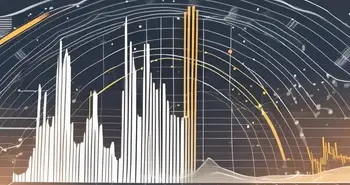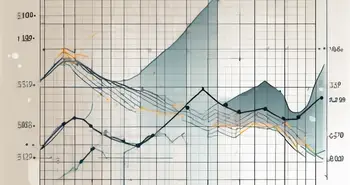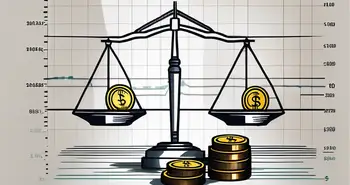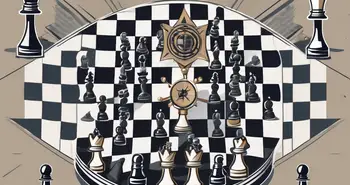Formation Trading for Profits: A Practical Guide to Pattern-Based Strategies
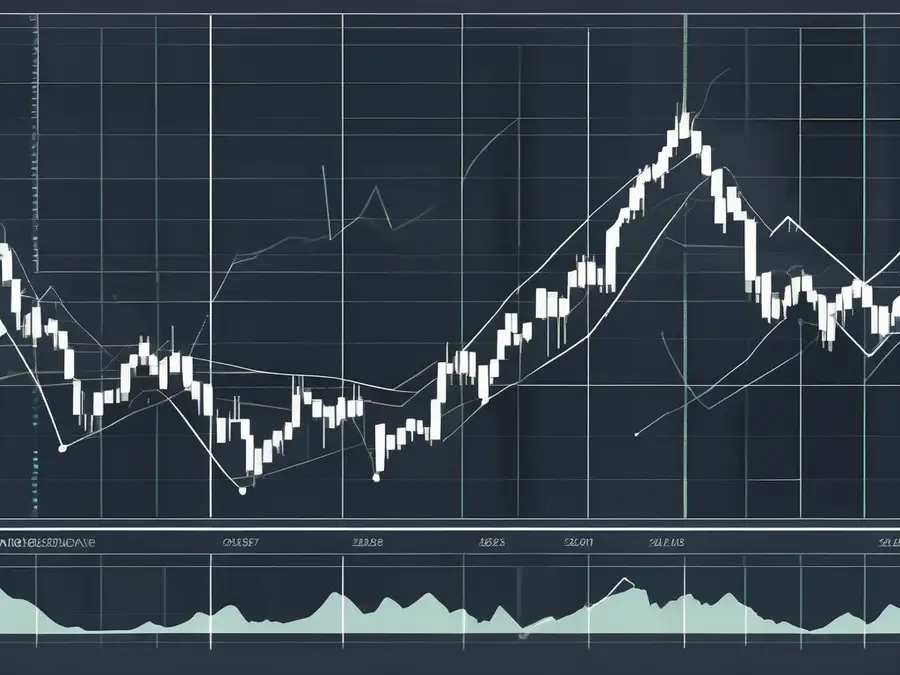
Formation trading aka pattern trading has a way of turning the chaos of the markets into a clear path to profit, and we believe it can do the same for you. If you're serious about trading, this strategy is something you definitely want in your toolkit.
In this guide, we'll go on a journey together into the world of formation trading. I'll share what I've learned about identifying key patterns and using them to your advantage. We’ll explore why formation trading is so powerful, dive into the different types of formations, and look at the tools and strategies that can help you succeed.
This isn’t just a technical guide—it's a hands-on, practical resource filled with real-life examples and insights I've gathered over years of trading. My goal is to make this information as relatable and useful as possible, whether you're just starting out or looking to sharpen your skills.
Understanding Formation Trading
Definition and Importance of Formation Trading
Formation trading, also known as pattern trading, is a technical analysis approach that involves analyzing chart patterns to predict future price movements. By studying recurring patterns, traders can make informed decisions and take advantage of potential profit opportunities.
Mastering formation trading is crucial because it provides traders with a reliable method to identify potential entry and exit points in the market. With a firm grasp of chart patterns, you can increase your chances of generating consistent profits and minimizing losses.
Delving deeper into the world of formation trading reveals a fascinating landscape where traders can uncover hidden opportunities within the patterns. Each chart pattern tells a unique story about market sentiment and potential price movements, offering traders valuable insights into the dynamics of supply and demand.
Furthermore, understanding the nuances of different chart patterns can empower traders to anticipate market trends and position themselves strategically. Whether it's a head and shoulders pattern signaling a trend reversal or a symmetrical triangle indicating a period of consolidation, each formation presents a puzzle for traders to decipher.
Key Principles of Formation Trading
To successfully navigate the world of formation trading, you need to understand and apply a few key principles:
- Patience: Wait for the confirmed formation to develop and ensure it meets your criteria before entering a trade.
- Confirmation: Use additional technical analysis tools and indicators to confirm the validity of the formation before making any trading decisions.
- Money Management: Implement proper risk management techniques to protect your capital and minimize potential losses.
By incorporating these principles into your trading strategy, you'll be well-equipped to navigate the complex world of formation trading.
Tools for Formation Trading
Accurate charting tools are essential for successful formation trading. That's why choosing the trading platform is one of the most important aspects when you are thinking to jump in to this strategy. Look for platforms that offer advanced charting capabilities, real-time data, and the ability to set alerts for specific formations. Candlestick charts, bar charts, and line charts are widely used by traders to identify and analyze various chart patterns. These tools offer invaluable insights into price movements and can help you make well-informed trading decisions.
When using candlestick charts, traders can easily spot patterns such as doji, hammer, and engulfing patterns, which can signal potential market reversals or continuations. Bar charts, on the other hand, provide a visual representation of price movements within a specific time frame, allowing traders to assess market volatility and momentum. Line charts are useful for tracking overall price trends and identifying key support and resistance levels. These platforms not only help traders identify formation patterns but also execute trades efficiently based on their trading strategies.
In Morpher you can plan your trade with more than 50 indicators on an advanced charts powered by TradingView. All the favourite technical indicators that you love combine with candlesticks are available including EMA, RSI, Bollinger Bands and much more. Sign up now and experience the comfort of an easy technical analysis yourself!
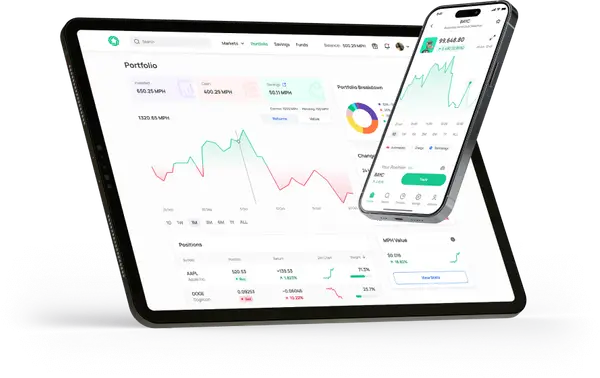
Types of Formation Trading
Trend Formations
Trend formations are one of the most common types of formations in trading. They provide valuable insight into the current market sentiment and help identify the overall direction of the market. Some popular trend formations include channels, triangles, and flags.
Channels are trend formations where the price of an asset moves between two parallel lines, indicating a clear direction in which the market is moving. Traders often use channels to set profit targets and stop-loss levels based on the width of the channel.
Reversal Formations
Reversal formations, as the name suggests, indicate a potential change in the direction of the market. These patterns can help traders spot opportunities to enter the market at the beginning of a new trend. Common reversal formations include head and shoulders, double tops, and double bottoms.
The head and shoulders pattern is a widely recognized reversal formation characterized by three peaks; the middle peak being the highest (the head), flanked by two lower peaks (the shoulders). This pattern signals a potential trend reversal from bullish to bearish or vice versa, depending on its location within the price chart.
Continuation Formations
Continuation formations occur when a price consolidates temporarily before resuming its previous trend. By identifying continuation formations, traders can anticipate the resumption of the underlying trend and seize profitable trading opportunities. Examples of continuation formations include wedges, rectangles, and pennants.
Rectangles are continuation patterns that show a period of consolidation within a horizontal range. Traders often look for a breakout from the rectangle pattern as a signal to enter a trade in the direction of the previous trend. The duration of the rectangle pattern can vary, with longer consolidations potentially leading to stronger breakouts.
Strategies for Successful Formation Trading
Timing in Formation Trading
Timing is everything in formation trading. To maximize profitability, it's essential to enter and exit trades at the right time. Combine the formation pattern with other technical indicators, such as moving averages or stochastic oscillators, to increase the accuracy of your timing. Remember, patience is key, and waiting for confirmation signals will significantly improve your success rate.
Risk Management in Formation Trading
Effective risk management is vital in any trading strategy, including formation trading. Determine your risk tolerance level and set appropriate stop-loss orders to protect your capital. Additionally, consider position sizing to ensure that each trade aligns with your overall risk management strategy.
Now, let me share a personal story that illustrates the power of formation trading. A few years ago, I spotted a classic double bottom formation in the stock of a well-known company. With careful analysis and confirmation from other indicators, I entered the trade at an opportune time. Within a few weeks, the stock soared, allowing me to secure a substantial profit. This experience reinforced my belief in the effectiveness of formation trading and inspired me to share my knowledge with others.
Common Mistakes in Formation Trading
Overtrading and How to Avoid It
One common mistake traders make in formation trading is overtrading. Jumping into every formation that catches your eye can lead to losses and missed opportunities. Instead, focus on high-quality formations that meet your criteria, and exercise discipline by sticking to your trading strategy. Remember, patience and quality over quantity is the key to success.
Ignoring Market Trends
Ignoring market trends can be a costly mistake in formation trading. Always consider the prevailing trend before trading any formation. Going against the trend increases the risk of getting caught in false breakouts or reversals. Aligning your trades with the overall market direction will significantly enhance your chances of success.
FAQ – Frequently Asked Questions
What is formation trading?
Formation trading is a technical analysis approach that involves analyzing chart patterns to predict future price movements. It offers traders a systematic way to identify potential profit opportunities.
Why is formation trading important?
Formation trading is important because it provides traders with a reliable method to identify potential entry and exit points in the market. It helps increase the chances of generating consistent profits and minimizing losses.
What are the key principles of formation trading?
The key principles of formation trading include patience, confirmation, and money management. These principles help traders make well-informed decisions and manage risk effectively.
Which tools are essential for formation trading?
Essential tools for formation trading include accurate charting tools such as candlestick charts, bar charts, and line charts. Additionally, using software and platforms that offer advanced charting capabilities and real-time data can further enhance your trading experience.
What are some common mistakes in formation trading?
Two common mistakes in formation trading are overtrading and ignoring market trends. Overtrading can lead to losses and missed opportunities, while ignoring market trends increases the risk of false breakouts and reversals.
Formation trading is a skill that, once mastered, can significantly improve your trading performance. By understanding the various types of formations, utilizing the right tools, and implementing effective strategies, you'll be well on your way to becoming a successful formation trader. Remember to combine technical analysis with your own expertise and experience to achieve optimal results. Happy trading!
Ready to put your formation trading knowledge into practice? Join Morpher, the revolutionary trading platform that's changing the game with blockchain technology. Experience zero fees, infinite liquidity, and the freedom to trade a variety of asset classes, including stocks, crypto, forex, and more. With fractional investing, short selling capabilities, and up to 10x leverage, Morpher empowers you to trade on your terms. Sign up now at Morpher.com and start your journey with a Free Sign Up Bonus. Elevate your trading experience with Morpher's unique Virtual Futures and take control of your investments today.

Disclaimer: All investments involve risk, and the past performance of a security, industry, sector, market, financial product, trading strategy, or individual’s trading does not guarantee future results or returns. Investors are fully responsible for any investment decisions they make. Such decisions should be based solely on an evaluation of their financial circumstances, investment objectives, risk tolerance, and liquidity needs. This post does not constitute investment advice.

Painless trading for everyone
Hundreds of markets all in one place - Apple, Bitcoin, Gold, Watches, NFTs, Sneakers and so much more.

Painless trading for everyone
Hundreds of markets all in one place - Apple, Bitcoin, Gold, Watches, NFTs, Sneakers and so much more.

